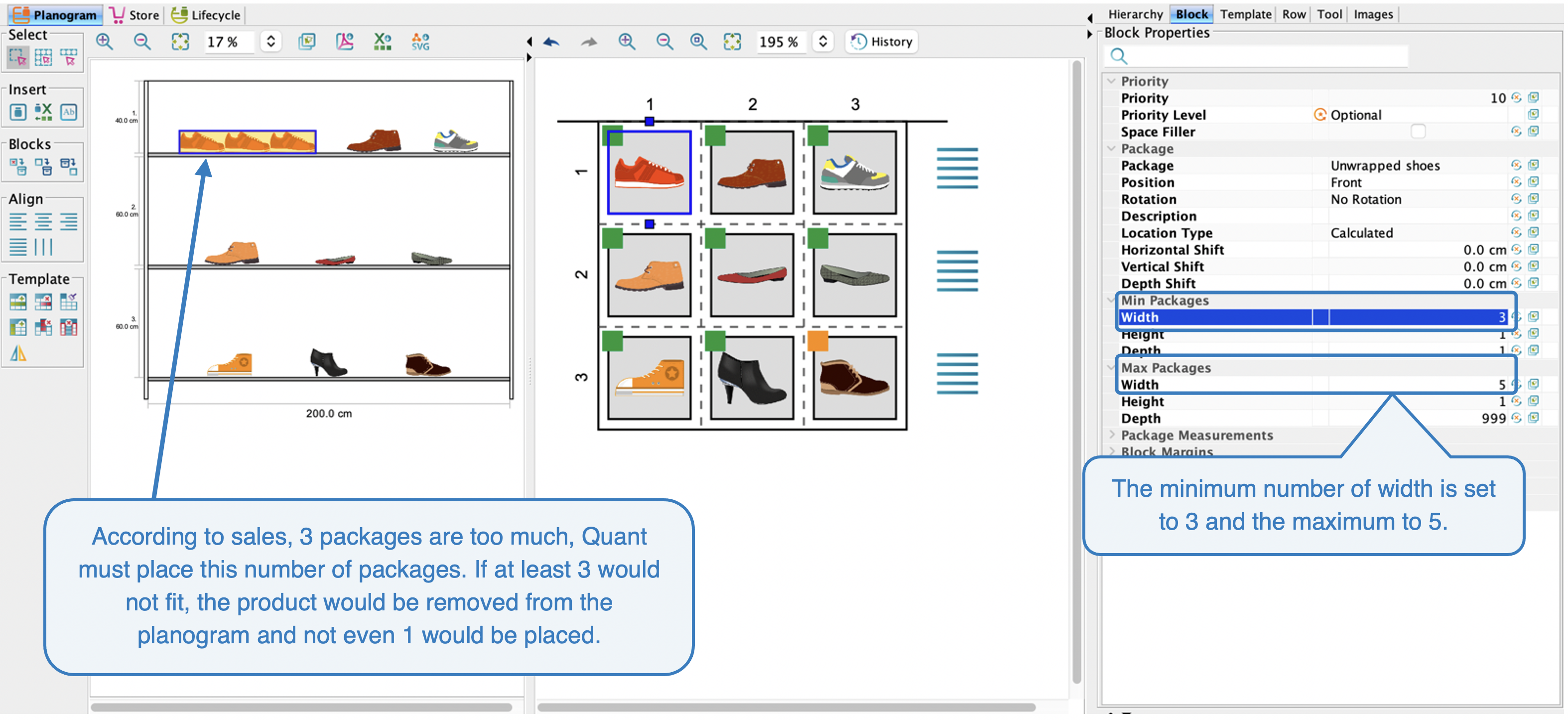Setting and Respecting of the Number of BUs in Width
In optimised planograms, in addition to the replenishment criteria, the number of packs in the planogram can also be set according to different priority levels.
The number of width packs is set in the Block tab.
We will show the effect of setting priority levels on the number of BUs in width with the example of a product that has passed the replenishment criteria and is placed in the planogram. The optimal number of product is 1 BU.
1. Optional priority level
This is an optional priority level, Quant places the optimal number of pieces, i.e. 1 BU.
We will now increase the number of minimum packs to 3 BUs. Although 3 packs are too many according to the sales of this product, Quant must place this number of packs. If at least 3 packs would not fit, the product would be completely eliminated from the planogram and not even 1 unit would be placed.
 Higher number of Min Packages2. Required priority level
Higher number of Min Packages2. Required priority level
If the product passes the replenishment criteria, it behaves the same as a product with an optional priority level - it places the optimal number of units.
The difference from the optional priority level is that the required priority level does not allow Quant to drop a product if it fails the replenishment criteria.
3. Fixed priority level
Quant places the number of BUs that fall within the range that is set in the Block tab. Sales of such a product are ignored.